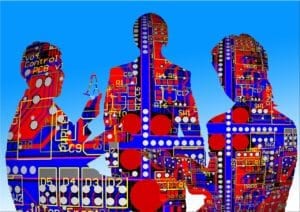Building the digital railway – 6 December 2017
Building the digital railway – 6 December 2017
Held in Paris, the 3rd UIC Digital Conference explored Cloud computing, public data as a greater asset, carbon offsetting, big data, and system modelling for life cycle cost optimisation. All, of course, with an eye to building the digital railway…

Rail in the Cloud & data as asset
“Our role is to give organisations the tools so they can be innovative,” said Brett McMillen, senior sales manager at Amazon Web Services (AWS). “Through the benefits of commercial Cloud computing we remove a lot of the IT heavy lifting so organisations can innovate on their own, and be safer – their IT systems become more secure when they shift to the Cloud.”
Focusing on ‘vision’, i.e. extracting rich metadata from visual content through Amazon’s Rekognition software, he explained the potential benefits for rail, pointing out that “it used to be very expensive to do apps around this.”
In concrete terms, one possible function could be to train cameras on train platforms to recognise and differentiate between people and luggage – so giving operators insight on who is carrying what on board. Recognising suspicious packages is another prospect.
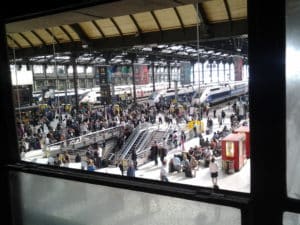
From a law enforcement view, Rekognition could be used to quickly – from days and weeks to seconds – recognise “persons of interest”. Also, analysis of facial characteristics could provide immediate feedback on the emotions of passengers boarding and alighting – “no need to get them to fill out forms”, pointed out Mr McMillen.
On the topic of public data as an asset, he referred to Transport for London (TfL), their open data rationale, and a surprise. “With 13,000 registered developers, they realised they didn’t have to create every app and that other organisations are using the data.”
System modelling & life cycle cost optimisation
“Maintenance strategies for assets like track switches typically fall into three types – replacement, planned renewal, and/or preventive regular maintenance,” said Jean-Sébastien Genot from software firm Cosmo Tech.
The Cosmo Tech platform does things differently, creating scenarios that include information on asset class and related families, then defining ageing laws and obsolescence management for each family, followed by multiple maintenance policies and actions related to the latter.
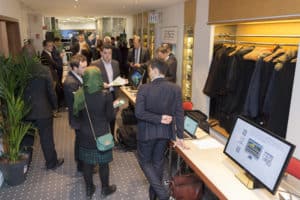
Carbon offsetting
The mission of ClimateSeed is to offset the carbon footprints of corporations through their participation in sustainable projects worldwide. Partners include Fondation GoodPlanet, Microsol, and BNP Paribas.
“We are bankers, not start-uppers,” said Sébastien Nunes from Tomorrow, a ClimateSeed platform project that seeks to tackle the weak spots in voluntary government carbon offsetting markets.
He listed these failings as being a lack of transparency, a fragmented value chain, limited scope, and limited benefits due to the lack of a centralised marketplace.
“The initiative aims to create a marketplace where investors will connect with project carriers,” he said, “as well as offering value added services such as reporting, monitoring, social community, and marketing.”
Understanding the data story
Data has and continues to alter our lives, largely due to the existence of digital footprints.
Big data, the mix of unstructured and multi-structured data within companies is also growing at an exponential rate. But where exactly is it and how should business look at it in the right way?
“Most companies analyse a mere 12% of their data,” said Larry Wilson, senior manager Solutions, Business Analystics & IoT, Splunk. “Machine data, or ‘digital fingerprints’, is growing 10X faster than business data. It gives stories and insight, and by understanding them you can address some of your business needs.”
Case in point: three year’s ago, Deutsche Bahn (DB) wanted to understand how to create business value out of its data in the rolling stock arena – “they used our product to do this,” said Mr Wilson.
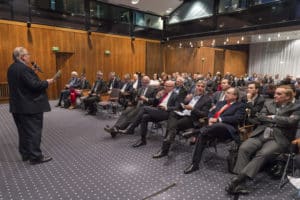
UIC Digital Awards 2017
Among the prize winners, French start-up Vivanoda topped the ‘services’ category for its web platform currently live in five European countries. A one-stop-shop, it enables travellers to compare and combine transport modes (air, rail, bus, ridesharing, and ferries) and offers in a single search.
“Free for users, platform partners/carriers benefit from greater visibility and reach new customers, plus they pay us commission on bookings,” said founder and CEO Nicolas Pellier. “Other funding sources right now are what we call ‘sponsored routes’, whereby our partners can sponsor their offer to display it at the top of search results and boost visibility, and on-site ads.”
Vivanoda clocked up over 2 million visits in 2016.
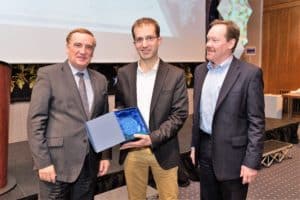
UIC Digital Platform – ‘Share-Open-Connect’
“The guiding philosophy of the UIC Digital Platform, created in 2015, is to ‘share, open and connect’,” said Jean-Pierre Loubinoux, director general, UIC. Its highlights to date include collaboration with 60 start-ups, four seminars held worldwide, seven proofs of concepts that include improving level crossing safety and accessibility for blind people in stations, a Silicon Valley tour, and ‘progress’ papers.
Watch this space!



